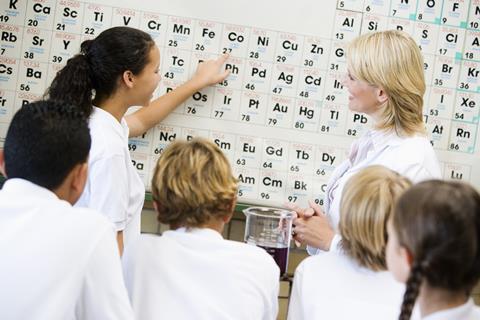The move from Secondary 2 Science to Secondary 3 Chemistry is a major academic shift for students in Singapore. This transition requires adapting to a more structured and intensive subject, forming the basis for O Level success and future science studies.

Differences Between Secondary 2 Science and Secondary 3 Chemistry
In Secondary 2, Science is taught as a broad subject combining elements of biology, chemistry, and physics. Lessons are typically straightforward, introducing basic concepts like states of matter, elements and compounds, and simple chemical reactions.
Secondary 3 Chemistry, however, focuses exclusively on chemistry with much greater depth. Students dive into more complex topics such as atomic structure, stoichiometry, acids and bases, and chemical bonding. These require application of concepts and mathematical calculations, not just memorization.
There is also a stronger emphasis on laboratory work, including titrations and qualitative analysis. Precision, observation, and accurate data handling become vital skills at this level.
Challenges Faced by Students
1. Understanding Abstract Concepts
Topics like atomic structure and chemical bonding involve invisible processes at the atomic level. Unlike Secondary 2 where most science concepts are concrete, Secondary 3 requires students to visualize molecules and subatomic particles, which can be challenging initially.
2. Quantitative Problem-Solving
Calculations involving moles, molar mass, and chemical equations are central in Secondary 3. Many students who are less confident in math may find stoichiometry and limiting reagent problems particularly tough without additional practice.
3. Laboratory Skills
Practical lessons increase in complexity. From titrations to qualitative analysis, students are expected to follow precise procedures, handle apparatus confidently, and make accurate observations.
4. Time Management
The volume of new concepts introduced in a short period can be overwhelming. Without an organized study approach, students may fall behind, especially when juggling multiple subjects.

Strategies for a Smooth Transition
1. Strengthen Foundational Knowledge
Revisiting Secondary 2 topics like chemical reactions and states of matter helps solidify basic understanding. A strong foundation reduces the learning curve when encountering advanced concepts later.
2. Develop Visualization Skills
Using models, animations, and online simulations can help students grasp abstract topics. For example, watching animated diagrams of ionic bonding or electron shells can bring invisible structures to life.
3. Practice Problem-Solving Regularly
Regular practice is key. Working through a variety of stoichiometry and balancing equation problems helps students build confidence and accuracy. Reviewing mistakes is just as important to address misunderstandings early.
4. Enhance Laboratory Skills
Pay attention during practical demonstrations and ask questions if unsure. Practicing lab techniques during free periods and watching instructional videos can reinforce familiarity and confidence.
5. Organize Study Schedules
Creating a weekly study plan allows students to manage their time across subjects. Breaking topics into smaller chunks and reviewing chemistry regularly will prevent last-minute cramming.
6. Seek Help When Needed
If a concept isn’t clear, students should speak to their teacher or reach out to a tutor. Study groups can be helpful for discussion, while online platforms offer explanations and practice quizzes.
Building a Positive Mindset
Beyond strategies, success in Secondary 3 Chemistry also depends on mindset. Curiosity, perseverance, and a willingness to tackle difficult problems can make learning more enjoyable. Relating chemistry to everyday life—like how reactions occur during cooking or cleaning—can spark interest and deepen understanding.
Celebrating small achievements, like mastering a tough chapter or scoring better on a quiz, can motivate students to keep improving. A growth mindset reminds students that effort leads to progress, even in challenging subjects.
Resources for Support
There are many resources available to help students ease the transition:
- Textbooks and School Notes: These provide explanations aligned with the syllabus.
- Online Learning Platforms: Sites like YouTube, Khan Academy, or education portals offer tutorials and interactive visuals.
- Past Year Exam Papers: Practicing these builds familiarity with question types and improves exam readiness.
- Tuition Support: A good chemistry tutor can break down difficult topics and provide guided practice to reinforce learning.
Conclusion
The transition from Secondary 2 Science to Secondary 3 Chemistry is a key academic leap. By understanding the differences in curriculum and expectations, and implementing smart strategies, students can make the shift smoothly. With consistent practice, the right resources, and a curious mindset, every student can build a strong chemistry foundation and set themselves up for success in O Levels and beyond.
Need Guidance for Secondary 3 Chemistry?
At Focus Chemistry, we specialize in guiding students through challenging academic transitions. Our Secondary 3 Chemistry tuition program builds strong fundamentals, improves exam techniques, and boosts confidence—one concept at a time.
Contact us now to book your free trial class and experience our proven teaching methods.

